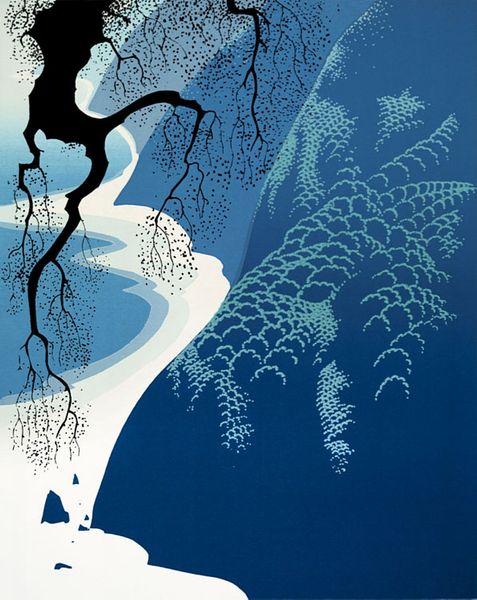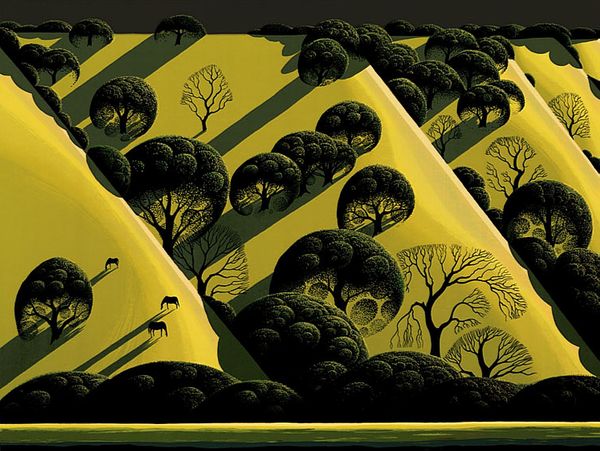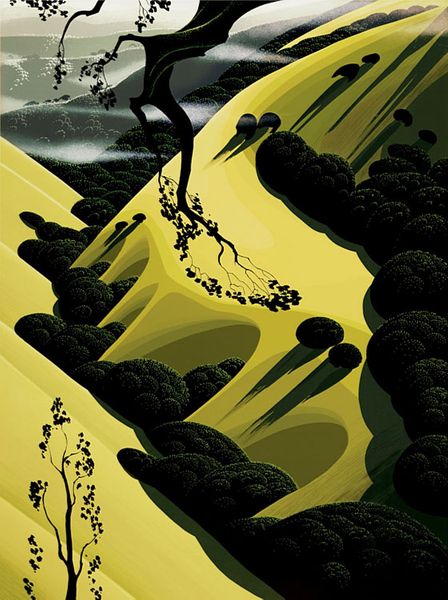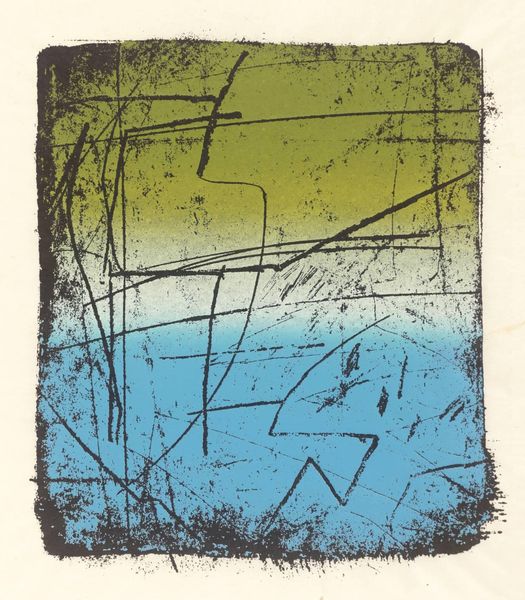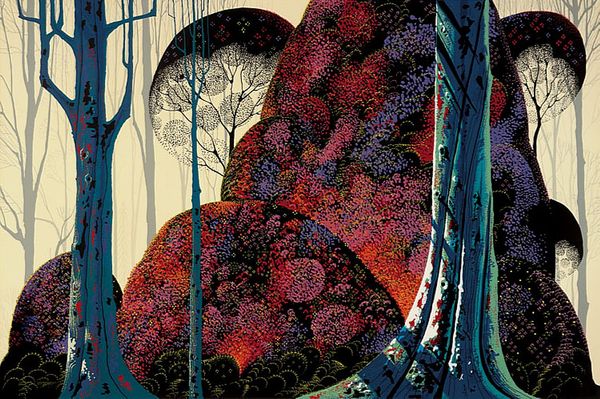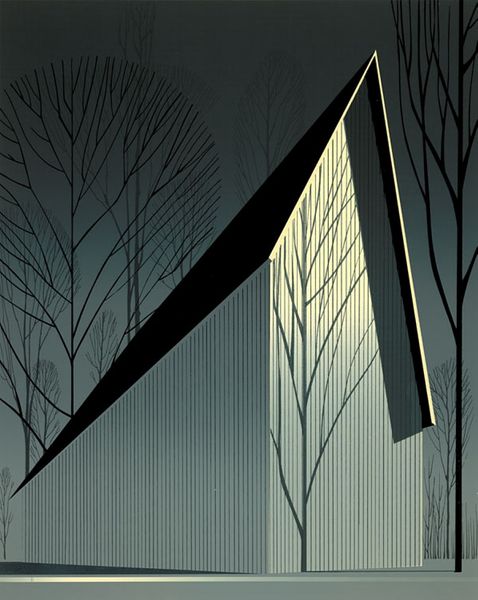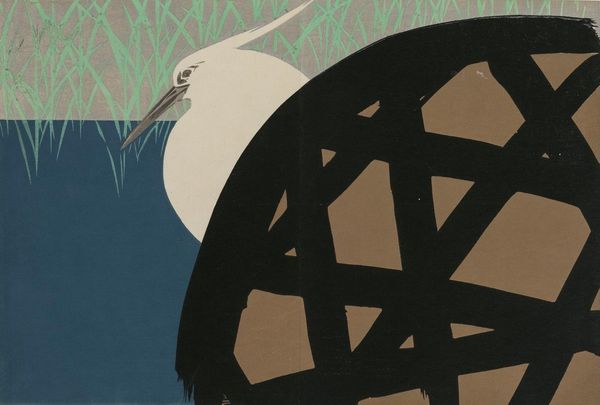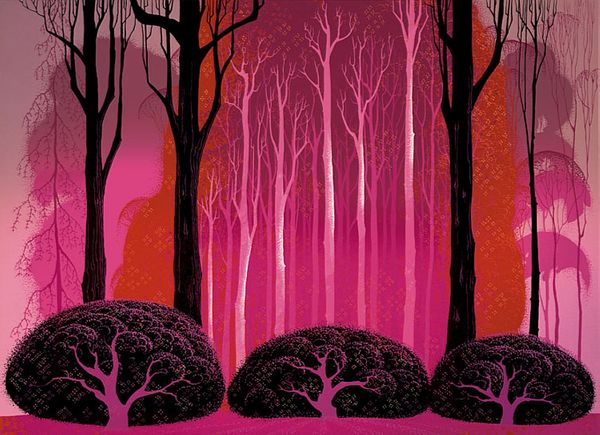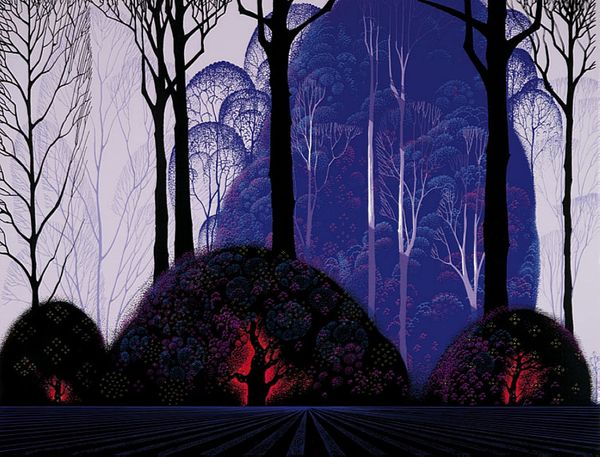
tempera, painting
#
tempera
#
painting
#
landscape
#
form
#
geometric
#
abstraction
#
line
#
modernism
Copyright: Eyvind Earle,Fair Use
Editor: Here we have Eyvind Earle's "Turquoise" from 1983, done in tempera. It feels very stylized, almost like a flattened stage set. The trees are so graphic, and the whole thing is built from distinct shapes. What draws your eye when you look at it? Curator: What strikes me is Earle’s conscious manipulation of the material. He chooses tempera, known for its opacity and quick-drying qualities, enabling him to create these distinct, almost graphic, layers. It allows for minimal blending, emphasizing the constructed nature of the landscape. Look at the buildings; do they seem prefabricated to you, almost commenting on post-war suburban sprawl through a material lens? Editor: I see what you mean! The shapes of the buildings *are* really basic, and the crisp lines add to that manufactured feel. So you're saying the materials aren't just about the visual style, but also speak to the subject matter? Curator: Precisely. Consider the smooth, flat application of paint, eliminating any sense of texture. Is he, perhaps, pointing to the disconnect between idealized notions of nature and the manufactured reality of our built environment? Think about the labour involved in creating such a smooth surface, in direct contrast to the textured roughness we might expect from 'nature'. Does that shift your reading? Editor: It does, especially thinking about that smooth surface as deliberate labour! I hadn’t considered the buildings reflecting a critique about suburban life, but the conscious choice of materials really does give that idea weight. Curator: Material choices are never neutral! And thinking about the context, tempera has associations with both early Renaissance altarpieces *and* commercial illustration. What tensions do you think that adds to the piece? Editor: So, high art versus mass production! Seeing it that way definitely deepens my understanding. Thanks! Curator: Likewise! Paying attention to the materiality always adds new readings to our understanding of a work, expanding both context and narrative.
Comments
No comments
Be the first to comment and join the conversation on the ultimate creative platform.
